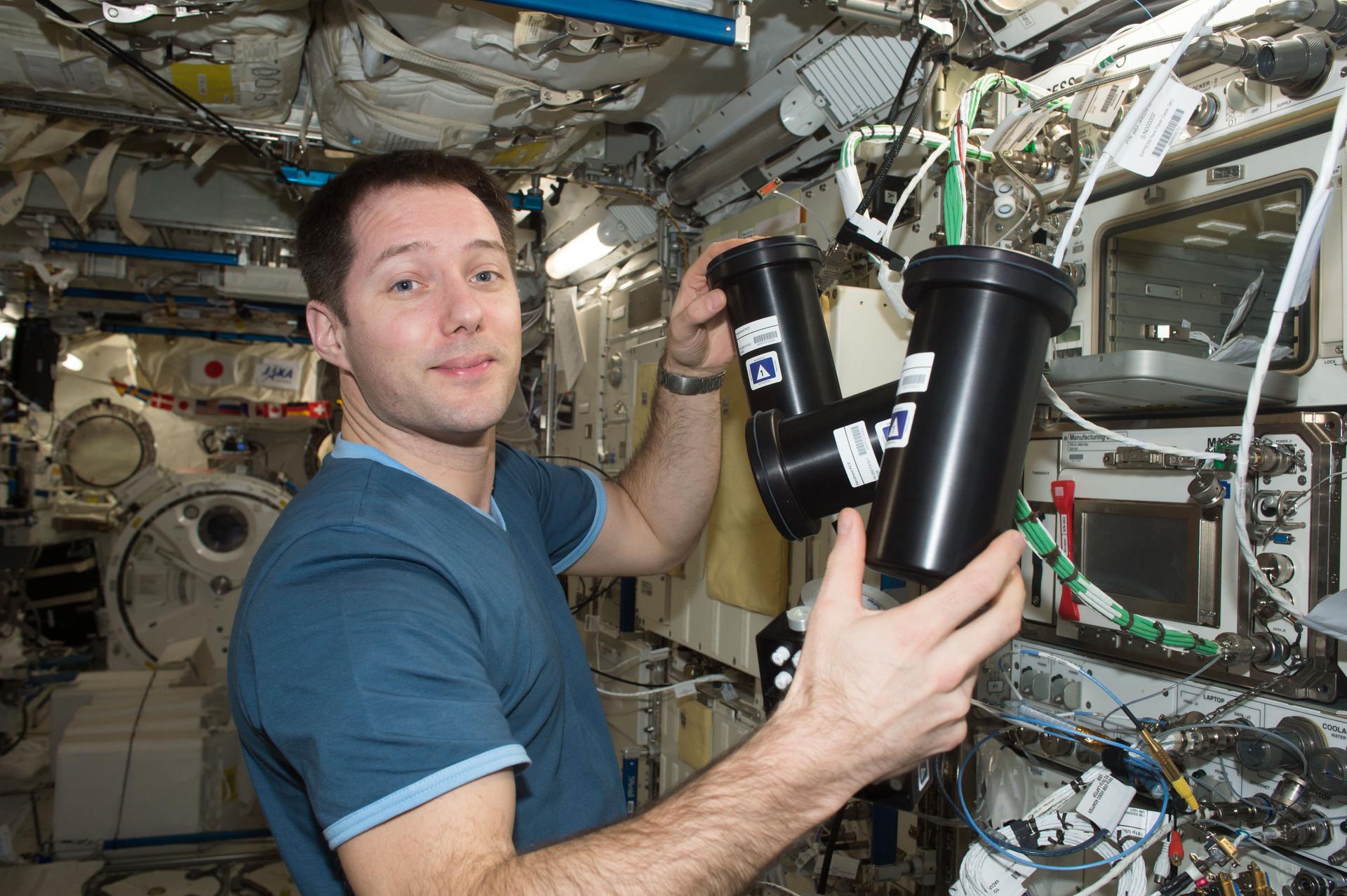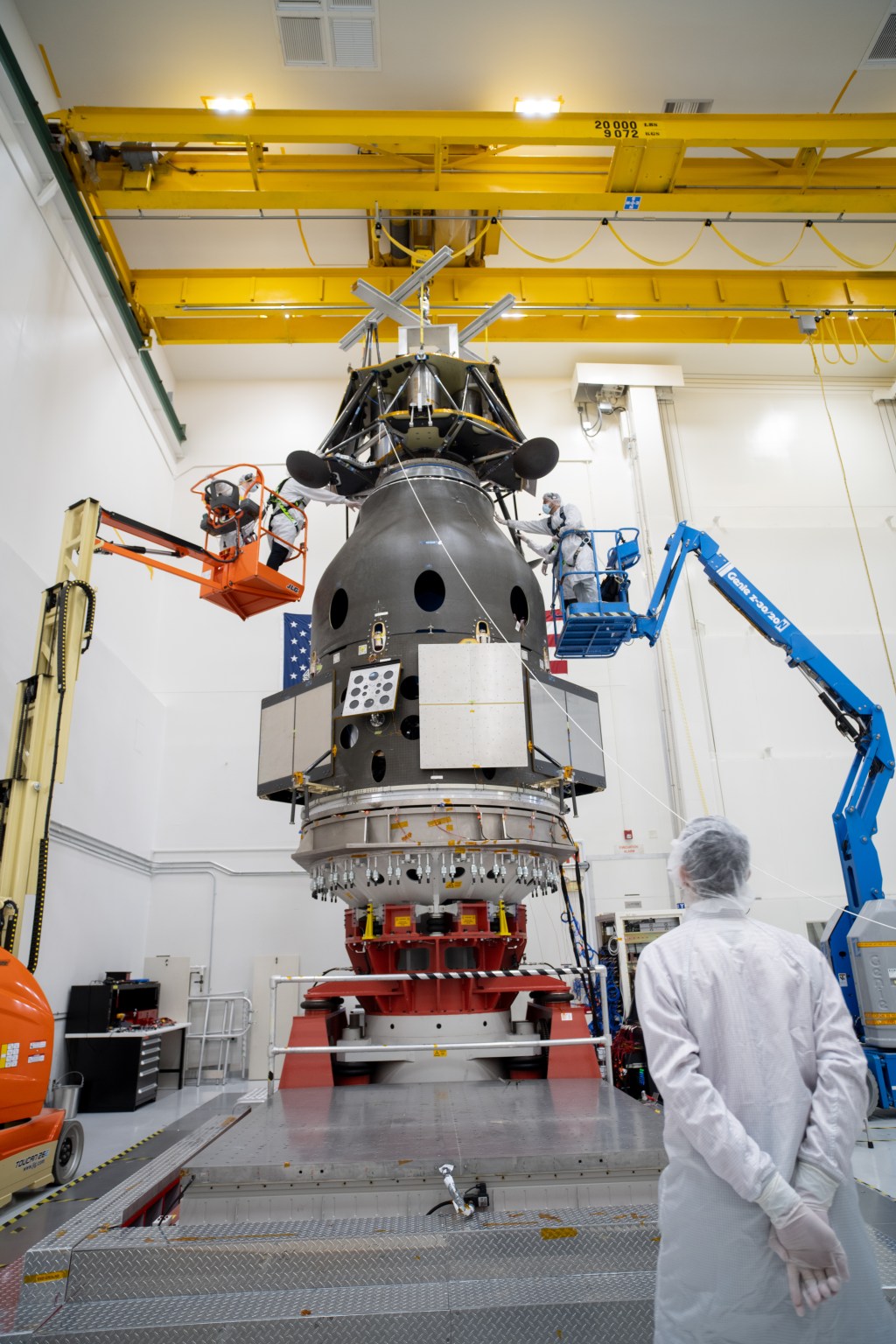1 min read
Pullout of Aurora Observations on Jupiter (NIRCam Image)
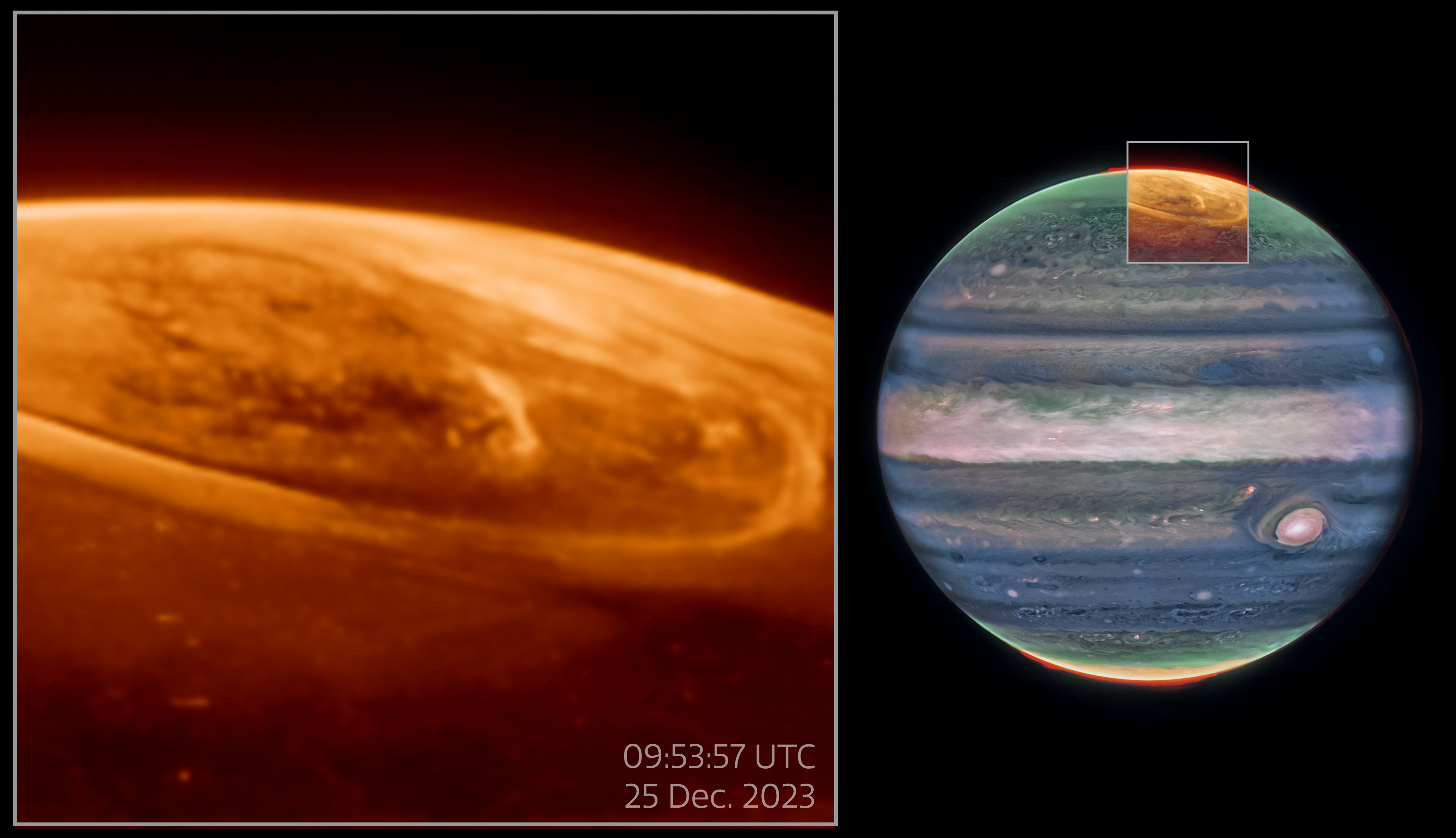
These observations of Jupiter’s auroras (shown on the left of the above image) at 3.36 microns (F335M) were captured with NASA's James Webb Space Telescope’s NIRCam (Near-Infrared Camera) on Dec. 25, 2023. Scientists found that the emission from trihydrogen cation, known as H3+, is far more variable than previously believed. H3+ is created by the impact of high energy electrons on molecular hydrogen. Because this emission shines brightly in the infrared, Webb’s instruments are well equipped to observe it. The image on the right shows the planet Jupiter to indicate the location of the observed auroras, which was originally published in 2023.
About the Data
- Data DescriptionData DescriptionProposal: A description of the observations, their scientific justification, and the links to the data available in the science archive.
Science Team: The astronomers who planned the observations and analyzed the data. "PI" refers to the Principal Investigator.Image on right was created with Webb data from proposal: 1373 (I. de Pater). Image Processing: Joseph DePasquale (STScI)
- InstrumentInstrumentThe science instrument used to produce the data.NIRCam
- Exposure DatesExposure DatesThe date(s) that the telescope made its observations and the total exposure time.27 July 2022, 25 December 2023
- FiltersFiltersThe camera filters that were used in the science observations.Left: F335M Right: F164N, F212N, F360M
- Object NameObject NameA name or catalog number that astronomers use to identify an astronomical object.Jupiter
- Object DescriptionObject DescriptionThe type of astronomical object.Gas giant aurora
- Release DateMay 12, 2025
- Science ReleaseNASA’s Webb Reveals New Details, Mysteries in Jupiter’s Aurora
- CreditImage: NASA, ESA, CSA, STScI, Ricardo Hueso (UPV), Imke de Pater (UC Berkeley), Thierry Fouchet (Observatory of Paris), Leigh Fletcher (University of Leicester), Michael Wong (UC Berkeley), Joseph DePasquale (STScI), Jonathan Nichols (University of Leicester), Mahdi Zamani (ESA/Webb)

The jupiter image on the right is a composite of separate exposures acquired by the James Webb Space Telescope using the NIRCam instrument. Three filters were used to sample narrow wavelength ranges. The color results from assigning different hues (colors) to each monochromatic (grayscale) image associated with an individual filter. In this case, the assigned colors are: Red: F360M, Green: F212N, Blue: F164N
Related Images & Videos
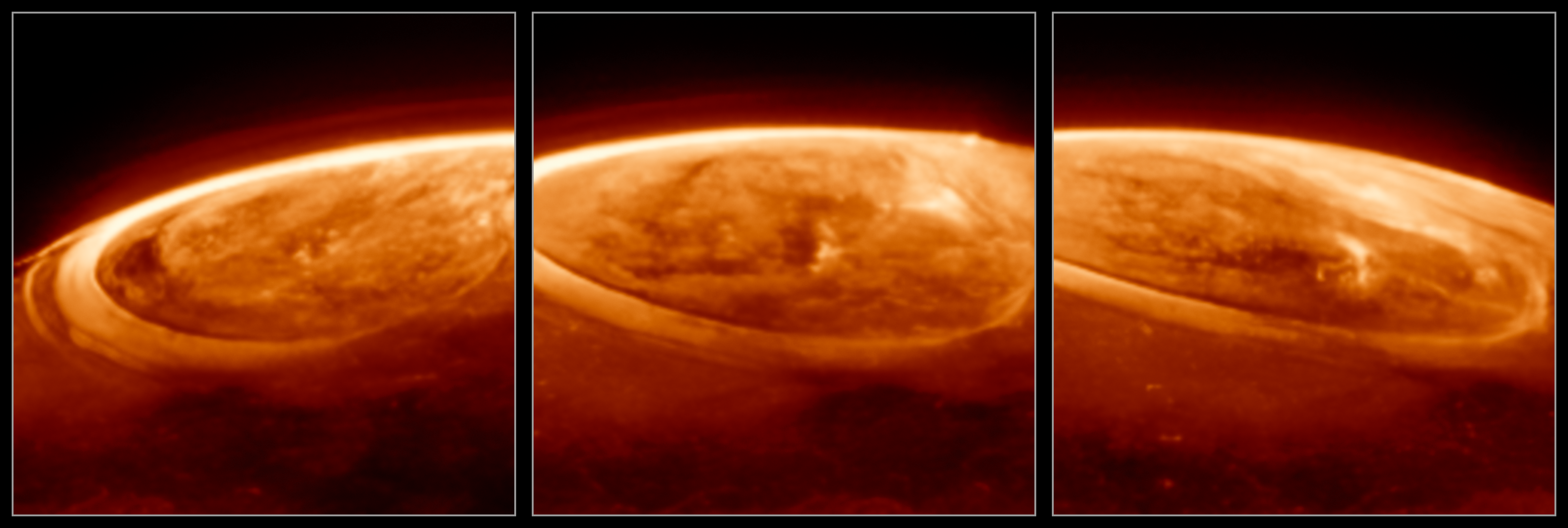
Close-up Observations of Auroras on Jupiter
These observations of Jupiter’s auroras, taken at a wavelength of 3.36 microns (F335M) were captured with Webb’s NIRCam (Near-Infrared Camera). Scientists found that the emission from trihydrogen cation, known as H3+, is far more variable than previously believed.

Pullout of Aurora Observations on Jupiter
NASA's James Webb Space Telescope has captured new details of the auroras on our solar system’s largest planet. The dancing lights observed on Jupiter are hundreds of times brighter than those seen on Earth. These observations of Jupiter’s auroras (shown on the left of the above...
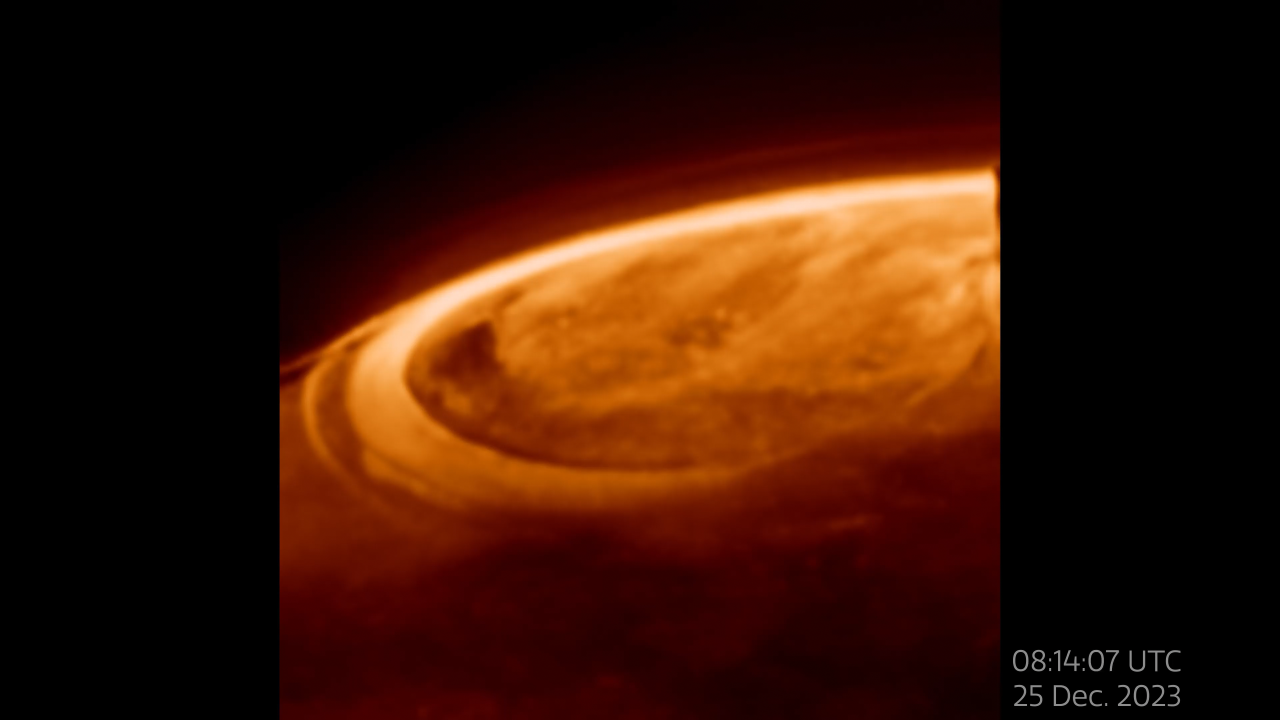
Closeup Observations of Auroras on Jupiter
NASA's James Webb Space Telescope has captured new details of the auroras on our solar system’s largest planet. The dancing lights observed on Jupiter are hundreds of times brighter than those seen on Earth. These observations of Jupiter’s auroras at a wavelength of 3.36 microns...
Share
Details
Laura Betz
NASA’s Goddard Space Flight Center
Greenbelt, Maryland
laura.e.betz@nasa.gov
NASA, ESA, CSA, STScI, Ricardo Hueso (UPV), Imke de Pater (UC Berkeley), Thierry Fouchet (Observatory of Paris), Leigh Fletcher (University of Leicester), Michael Wong (UC Berkeley), Joseph DePasquale (STScI), Jonathan Nichols (University of Leicester), Mahdi Zamani (ESA/Webb)





